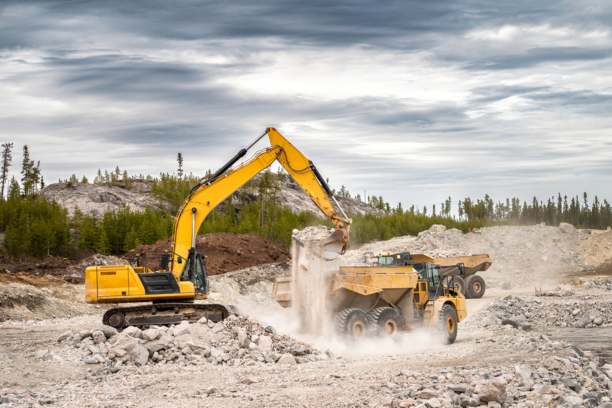Silica is a naturally occurring substance found in most rocks, sand, and clay. Its concentration varies—sandstone contains over 70% silica, while granite has around 15-30%. Silica is also a key component of construction materials such as bricks, tiles, concrete, and mortar.
When these materials are cut, drilled, ground, or polished, they release a fine, invisible dust known as respirable crystalline silica (RCS). This dust is small enough to penetrate deep into the lungs, causing serious health risks.
Health Risks of Respirable Crystalline Silica (RCS)
Exposure to RCS can lead to severe and often irreversible diseases, including:
Silicosis – A progressive lung disease causing inflammation and scarring, making it the biggest health risk to construction workers after asbestos.
Chronic Obstructive Pulmonary Disease (COPD) – A long-term condition that restricts airflow and damages lung function.
Lung Cancer – Long-term exposure significantly increases the risk of developing this fatal disease.
Why Is Silicosis Still a Major Issue Today?
Despite being one of the oldest known occupational diseases, silicosis remains a growing concern worldwide. Cases linked to artificial stone worktops—which contain higher concentrations of silica—have surged in recent years, prompting urgent regulatory action.
Australia’s Ground-breaking Ban on Engineered Stone Worktops
Following years of advocacy by doctors, trade unions, and affected workers, Australia has become the first country in the world to ban the manufacture, supply, and use of engineered stone worktops. This ban takes effect on 1st July 2024.
With international attention now on Australia’s actions, other countries—including the UK and the US—are closely reviewing their own regulations and industry practices. Some US states are even considering implementing similar bans.
In the UK, two former stone masons from Bradford tragically died from silicosis. Legal firm Irwin Mitchell successfully secured settlements for their families, proving that their employers failed to take reasonable steps to protect them.
New UK Initiatives to Combat Silica Exposure
The UK is taking steps to raise awareness and improve protection:
- The Silica Exposure Register – Launched in late 2024 by Irwin Mitchell, this allows industry workers to pre-emptively record their employment details in case of future health issues.
- HSE’s New Simplified Guidance for Stone Worktop Installers – Introduced in January 2025, this resource provides clearer safety protocols to reduce exposure.
- Free Online Training Tool by the British Occupational Hygiene Society (BOHS) – Designed to help workers in the kitchen worktop industry better understand and control silica risks. Access the training tool here.
The Warmsworth Stone Ltd Case: A Cautionary Tale
In May 2023, HSE inspectors identified critical safety lapses at Warmsworth Stone Ltd. These included:
- Failure to Control Dust Exposure: Workers were inadequately protected against RCS, a breach of COSHH regulations.
- Inadequate Welfare Facilities: Basic amenities essential for worker health and safety were insufficient.
- Poor Legionella Control: Water systems posed additional health risks.
Despite being served multiple enforcement notices and given a compliance extension, the company failed to address these issues by the follow-up inspection in September 2023. This negligence led to five improvement notices remaining unfulfilled, putting workers’ lives at continued risk.
Warmsworth Stone Ltd.’s non-compliance with s.21 of the Health and Safety at Work etc. Act 1974 (HSWA 1974) and COSHH regulations resulted in an £18,000 fine with an additional £4,064 in costs. Furthermore, the company director, was personally fined £1,062 and ordered to pay £3,782 in costs for consenting to or neglecting the breaches.
Key Safety Measures for Businesses
To combat the dangers of RCS, HSE and other industry bodies have developed comprehensive guidelines. HSE Guidance ‘Document Controlling Exposure To Stone Dust’ HSG201 is a great place to start.
Some vital controls include:
- Water Suppression Systems: Using water to minimize dust generation.
- Local Exhaust Ventilation: Implementing systems to capture dust at the source. These systems must be subject to thorough examination, at least every 14 months, these examinations must be undertaken by a competent person.
- Respiratory Protective Equipment (RPE): Providing masks with an assigned protection factor of at least 20. Wear masks are tight fitting, users must be clean shaven, and face fit tested, every 2 years.
- Effective Cleaning Practices: Employing wet methods or class M vacuums to remove dust from the environment, as well as provided methods for laundering work clothing, and handwashing and/or shower facilities for personal decontamination.
- Health Surveillance – Those exposed to RCS, should undergo annual lung function tests at least annually and for employees who have had 15 years of exposure to RCS while working for one or more employer(s), health surveillance should also include a PA chest x-ray, after 15 years, then every 3 years after that, unless advised otherwise by a health professional.
- Engage with competent sources of advice – If you are unsure as to whether your practices are compliant, and you don’t have access to inhouse expertise engage with competent sources of advice to support your business to ensure the implementation of effective control measures that protect both employees health and the business from future prosecution.
We’re here to help
Ensuring workplace health and safety compliance is essential for protecting your employees and your business. At HR Solutions, we’re here to provide guidance, tools, and expertise to help you stay compliant and create a safe work environment.
📚 Access our range of risk and compliance audits, including Health and Safety Risk Audits.
📩 Stay updated on the latest health and safety regulations by signing up for our newsletter.
📞 Need tailored advice? Contact us today at 0844 324 5840 or complete one of our contact forms to speak with our experts.


